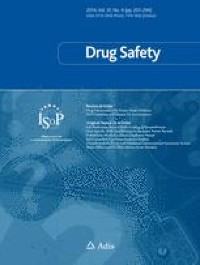|
Σφακιανάκης Αλέξανδρος
ΩτοΡινοΛαρυγγολόγος
Αναπαύσεως 5 Άγιος Νικόλαος
Κρήτη 72100
00302841026182
00306932607174
alsfakia@gmail.com
Αρχειοθήκη ιστολογίου
-
►
2023
(391)
- ► Φεβρουαρίου (200)
- ► Ιανουαρίου (191)
-
▼
2022
(2843)
- ► Δεκεμβρίου (161)
- ► Σεπτεμβρίου (219)
-
▼
Μαρτίου
(314)
-
▼
Μαρ 17
(24)
- Effects of salicylate derivatives on localization ...
- Voice Symptoms and Wellbeing in School Teachers in...
- Active Surveillance Versus Thyroid Surgery for Dif...
- Acute anterior thigh compartment syndrome in Premi...
- Stability of extemporaneously prepared sitagliptin...
- Introducing Zirconium Organic Gels for Efficient R...
- Clinical Factors Predictive of Lymph Node Metastas...
- Radioguided surgery with iodine-125 seeds in breas...
- Deep brain stimulation of subthalamic nucleus modu...
- Pediatric morphometric study to guide the optimize...
- The feasibility of SHIMP for judging subjective ve...
- Immediate or interval abscess tonsillectomy?
- Voice Handicap Index Changes After Microflap Surge...
- Sulopenem: An Intravenous and Oral Penem for the T...
- Mycobacterium avium and Mycobacterium intracellula...
- Propensity Score Analysis of Outcomes Following La...
- Pancreatico-Jejunostomy On Isolated Loop After Pan...
- Postoperative Respiratory Events in Surgical Patie...
- MCM-41-supported double metal cyanide nanocomposit...
- Comprehensive analysis of cytokine adsorption prop...
- CEBPβ regulation of endogenous IGF-1 in adult sens...
- Th17 cells and their related cytokines: vital play...
- Sugemalimab: First Approval
- Deep Learning Forecasts the Occurrence of Sleep Ap...
-
▼
Μαρ 17
(24)
- ► Φεβρουαρίου (264)
- ► Ιανουαρίου (280)
-
►
2021
(5625)
- ► Δεκεμβρίου (231)
- ► Σεπτεμβρίου (345)
- ► Φεβρουαρίου (620)
-
►
2020
(2065)
- ► Δεκεμβρίου (535)
- ► Σεπτεμβρίου (222)
- ► Φεβρουαρίου (28)
-
►
2019
(9608)
- ► Δεκεμβρίου (19)
- ► Σεπτεμβρίου (54)
- ► Φεβρουαρίου (3791)
- ► Ιανουαρίου (3737)
-
►
2018
(69720)
- ► Δεκεμβρίου (3507)
- ► Σεπτεμβρίου (3851)
- ► Φεβρουαρίου (8116)
- ► Ιανουαρίου (7758)
-
►
2017
(111579)
- ► Δεκεμβρίου (7718)
- ► Σεπτεμβρίου (7549)
- ► Φεβρουαρίου (10753)
- ► Ιανουαρίου (10529)
-
►
2016
(16402)
- ► Δεκεμβρίου (7478)
- ► Φεβρουαρίου (900)
- ► Ιανουαρίου (1250)
! # Ola via Alexandros G.Sfakianakis on Inoreader
Η λίστα ιστολογίων μου
Πέμπτη 17 Μαρτίου 2022
Postoperative Respiratory Events in Surgical Patients Exposed to Opioid Analgesic Shortages Compared to Fully Matched Patients Non-exposed to Shortages
Εγγραφή σε:
Σχόλια ανάρτησης (Atom)
Αρχειοθήκη ιστολογίου
-
►
2023
(391)
- ► Φεβρουαρίου (200)
- ► Ιανουαρίου (191)
-
▼
2022
(2843)
- ► Δεκεμβρίου (161)
- ► Σεπτεμβρίου (219)
-
▼
Μαρτίου
(314)
-
▼
Μαρ 17
(24)
- Effects of salicylate derivatives on localization ...
- Voice Symptoms and Wellbeing in School Teachers in...
- Active Surveillance Versus Thyroid Surgery for Dif...
- Acute anterior thigh compartment syndrome in Premi...
- Stability of extemporaneously prepared sitagliptin...
- Introducing Zirconium Organic Gels for Efficient R...
- Clinical Factors Predictive of Lymph Node Metastas...
- Radioguided surgery with iodine-125 seeds in breas...
- Deep brain stimulation of subthalamic nucleus modu...
- Pediatric morphometric study to guide the optimize...
- The feasibility of SHIMP for judging subjective ve...
- Immediate or interval abscess tonsillectomy?
- Voice Handicap Index Changes After Microflap Surge...
- Sulopenem: An Intravenous and Oral Penem for the T...
- Mycobacterium avium and Mycobacterium intracellula...
- Propensity Score Analysis of Outcomes Following La...
- Pancreatico-Jejunostomy On Isolated Loop After Pan...
- Postoperative Respiratory Events in Surgical Patie...
- MCM-41-supported double metal cyanide nanocomposit...
- Comprehensive analysis of cytokine adsorption prop...
- CEBPβ regulation of endogenous IGF-1 in adult sens...
- Th17 cells and their related cytokines: vital play...
- Sugemalimab: First Approval
- Deep Learning Forecasts the Occurrence of Sleep Ap...
-
▼
Μαρ 17
(24)
- ► Φεβρουαρίου (264)
- ► Ιανουαρίου (280)
-
►
2021
(5625)
- ► Δεκεμβρίου (231)
- ► Σεπτεμβρίου (345)
- ► Φεβρουαρίου (620)
-
►
2020
(2065)
- ► Δεκεμβρίου (535)
- ► Σεπτεμβρίου (222)
- ► Φεβρουαρίου (28)
-
►
2019
(9608)
- ► Δεκεμβρίου (19)
- ► Σεπτεμβρίου (54)
- ► Φεβρουαρίου (3791)
- ► Ιανουαρίου (3737)
-
►
2018
(69720)
- ► Δεκεμβρίου (3507)
- ► Σεπτεμβρίου (3851)
- ► Φεβρουαρίου (8116)
- ► Ιανουαρίου (7758)
-
►
2017
(111579)
- ► Δεκεμβρίου (7718)
- ► Σεπτεμβρίου (7549)
- ► Φεβρουαρίου (10753)
- ► Ιανουαρίου (10529)
-
►
2016
(16402)
- ► Δεκεμβρίου (7478)
- ► Φεβρουαρίου (900)
- ► Ιανουαρίου (1250)



Δεν υπάρχουν σχόλια:
Δημοσίευση σχολίου